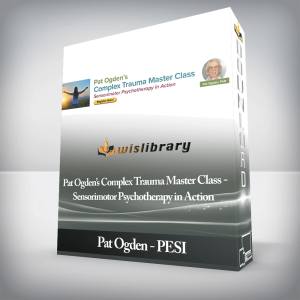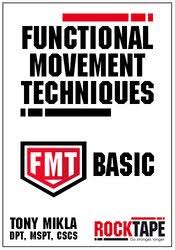Dr. Gabor Maté – A Masterclass Training For HealersA complete 6+ hour video training by Dr. Gabor Maté offering you a unique opportunity to deepen your skills in attuning and reaching others, even the most difficult clients. This Masterclass was developed for professionals and individuals who want to become more familiar with Gabor’s approach and techniques. This masterclass training for healers includes a comprehensive introduction and overview of Gabor’s unified philosophy on the origin of disease and mental illness, with detailed video lessons that offer a diversity of tools, techniques, and psycho-education focused on helping healing professionals to cultivate deeper attunement, connection and healing with their clients.  Gabor is passionate about changing the narrative around the international crisis of addiction.  In each lesson, Gabor thoughtfully presents his work through the lens of treating trauma, addictions, and expands on the special issues when treating substance abuse.  This masterclass is a “must have†for anyone that works with people and is interested in learning more about Gabor’s work and approach.LECTURE ONE: THE POWER OF CONNECTION & THE MYTH OF NORMAL67 MINUTESGabor weaves together the role of early childhood trauma, difficulties and stresses in the household, the wounds that parents carry and inadvertently pass on to their children, as well as societal and environmental stresses. Drawing on well-documented research in biochemistry, neurology, and physiology, Gabor ‘connects the dots’ in explaining how these factors influence us and contribute to asthma, heart disease, hypertension, diseases of the gut, cancers, addiction and more. He invites us to use curiosity to explore and understand ourselves and our clients, and through this new understanding, paints a path to begin making the fundamental societal change that can positively impact the next generation.LECTURE TWO: THE MIND-BODY CONNECTION51 MINUTESGabor explores how the mind influences our physiology, and how our perceptions create our world, but before that, our world influences the creation of our perceptions. When we help our clients to rewrite early messages, not changing what happened, but understanding it as a necessary decision for survival, we can change our current perceptions and behaviors. This impacts physiology, psychology, relationships, and virtually all of our perceptions of the world.  By learning how to use a combination of tools and techniques to educate and reach our clients, we enhance our capacity to reach them.  At the most basic, fully accepting and embracing compassion for our clients with unconditional positive regard  — which requires looking at our own self-judgments and wounds — opens up a new and much deeper capacity for healing with our clients.LECTURE THREE: THE FIVE LEVELS OF COMPASSION60 MINUTESGabor describes the five levels of compassion, and the blocks within us as professionals that often keep us from reaching the deepest and most profound attunement with our clients, which, in turn, limits our ability to do our best work.  By unpacking and exploring these blocks — which even the most experienced therapists and counselors, with decades of self-work can benefit from — we heal ourselves, and in so doing, find greater understanding and deeper regard for our clients and their stories and wounds.LECTURE FOUR: COMPASSION AND UNDERSTANDING73 MINUTESGabor explores the common fears around self-disclosure and the balance between appropriate client-therapist boundaries, on the one hand, and the benefits of deeper empathic connection that can come from appropriate self-disclosure that enhances therapeutic attunement by deepening empathy.LECTURE FIVE: STRESS AND TRAUMA ON THE DEVELOPING CHILD65 MINUTESAn exploration of our own wounds of codependency and how, even when we are self-aware, these behaviors can show up in our work enable us to explore and, with curiosity and self-compassion,  understand where these behaviors might be hiding in our work, where they came from, and how we can bring greater awareness to them. Even most therapists with decades of self-exploration will gain new insights that can enable a deepened sense of connection with clients, with a clearer understanding of how our wounds get in the way of doing our best work.  By understanding our own self-judgments and practicing self-compassion in letting them go, we free ourselves to do better work.LECTURE SIX: THE ROLE OF ATTACHMENT FROM BIRTH TO ADULTHOOD55 MINUTESGabor explores why he does not view addiction as a disease of the brain, and how compelling evidence points to traumas and other experiences early in life set the stage for survival strategies that impact the development of neural pathways that ultimately lead to not only risk of addiction, but many other psychological disorders and even physical diseases.  By understanding what addictive behaviors do for us — finding the underlying pain, solving the pain in one way or another that we have experienced — and changing these patterns we developed, cultivating attunement not only in the therapeutic environment, but in a client’s daily life, we can re-pattern and change the function of the brain and replace the ineffective strategies and behaviors with more effective ones.   A discussion of the neurotransmitter and brain pathways that are involved helps provide a clear biochemical basis for the origin of the problems and offers hope for long-term change.CONTINUING EDUCATION LEARNING OBJECTIVES– Upon completing this CE course, participants will be able to:– Describe the three prevailing theories about the origin of addiction– Explain the developmental theory of addiction– Describe the impact of trauma in development of addiction– Name and describe the five levels of compassion– Describe what Gabor explains as the key component of ‘safety’ in the therapeutic environment– Explain the role of attunement and connection in healing addictive behavior– Explain what a “difficult client†tells counselors and therapists about themselves– Describe the role of behavior as self-protection There are no reviews yet.Add a Review Cancel replyYou must be logged in to post a review.
 Pat Ogden – PESI – Pat Ogden’s Complex Trauma Master Class – Sensorimotor Psychotherapy in Action
₹17,762.00
Pat Ogden – PESI – Pat Ogden’s Complex Trauma Master Class – Sensorimotor Psychotherapy in Action
₹17,762.00
 Kim Foster – Marvelous Menopause
₹31,042.00
Kim Foster – Marvelous Menopause
₹31,042.00
Dr. Gabor Maté – A Masterclass Training For Healers
₹18,094.00






